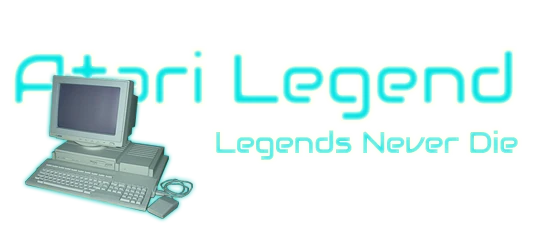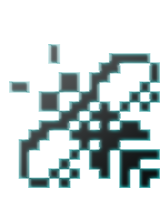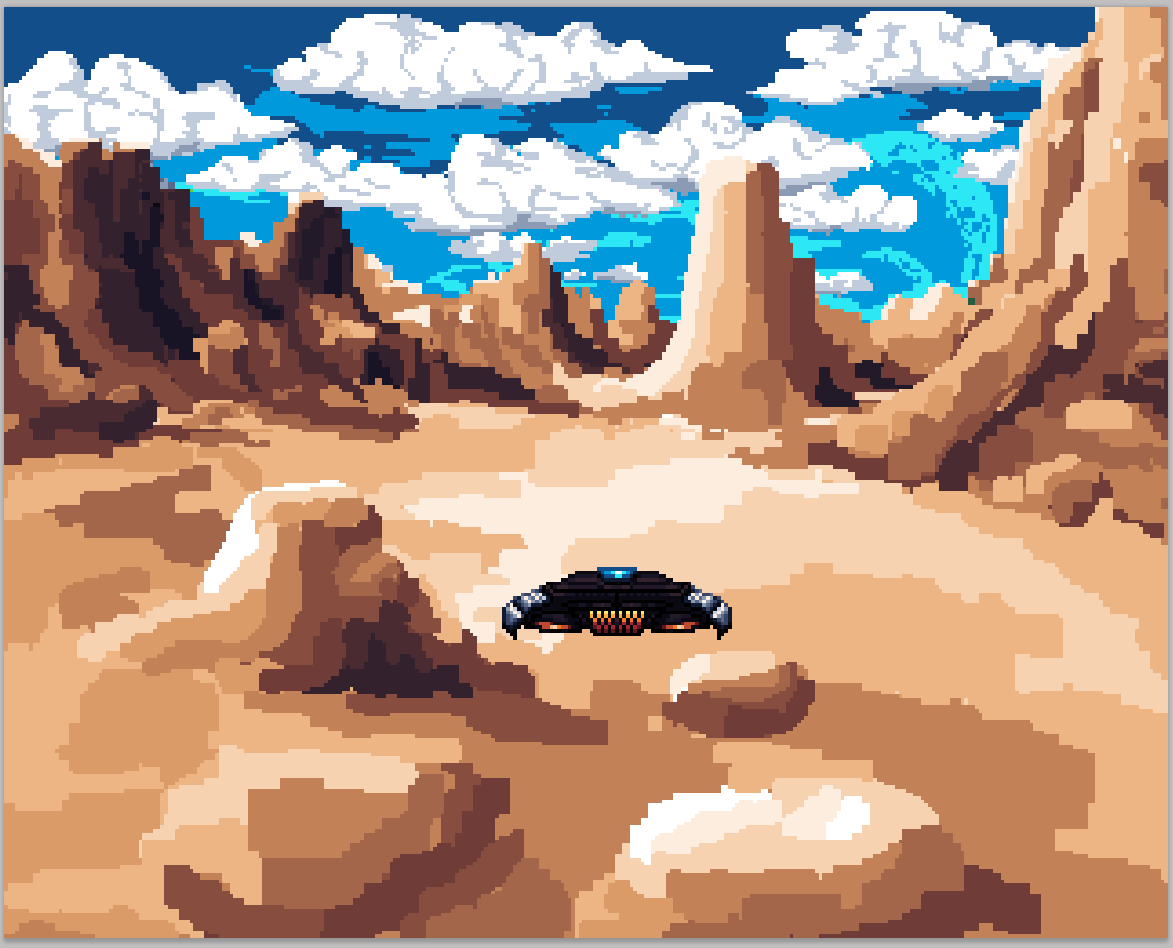







When I witnessed the first ever glimpses of a technique called Voxel Space, my jaw dropped to the floor. That was in 1993, on a friend's PC, and the game was called Commanche : Maximum Overkill. Little did I know, that this was also possible on an Atari ST. And when reading the thread on Atari-Forum about a possible new game for the Atari family of home computers called Vergeworld : Icarus Rising, I had to get in touch with the guys from Retrobones to learn more. Excited yet? Check this out.
There is currently no profile available in our database
There are currently no credits for this person in our database
1) Who are Retrobones
2) The team
3) Badbones?
4) The history of Vergeworld
5) Retro vs current gen
6) The technical side of the game
7) Voxel Space
8) Physical release
9) All time favorites
10) Thoughts on the ST
11) ST Enhanced
12) Fan favorites
13) Going to the pub
14) Words of wisdom

In VergeWorld: Icarus you play as Nix, a smuggler on a dry, desert planet. This concept art pictures the landscape and the aft view of your ship, Icarus.

The mother company Bad Bones Games. Retro Bones is a subdivision of Bad Bones focused on creating VergeWorld.
1) What is Retrobones? What is its history and what is its mission?
Retro Bones is a team of video game developers and retro fans. It was officially established on Halloween, 31 October 2019, when work on VergeWorld: Icarus started. Actually, it started long before that, as our lead producer - Kwahu - managed to create a prototype engine for a game about flying a ship in voxel space. Then he gathered a crew he pulled onboard et voila - Retro Bones was formed.
2) Who is doing what within the company? Can you present the people you are working with and what their roles are?
Well, we have to start with Kwahu, our producer and the brain of the operation. He started the project and keeps it going. I am the narrative designer - I design the story and lore. Ben Ghazi is the main programmer, Kuba is an art director, Elf is our pixel artist. And of course, Szudi, who creates out of this world music for the project.
3) I see a lot of things about Bad Bones Games on your Facebook and Twitter page. What is your relation to this company?
Well, simply put - Retro Bones is a subdivision of Bad Bones focused on creating VergeWorld. Bad Bones is a video game company making indie video games for modern platforms. I think the main reason for creating it was that Kwahu wanted a logo with Amiga and Atari colors ![]() Technically speaking, Retro Bones is a team, not the entire company.
Technically speaking, Retro Bones is a team, not the entire company.
4) Tell us about the history of VergeWorld? How did it start? Where did you get the idea?
The whole idea started in 2018, when Kwahu installed WinUAE to play some games from his childhood. He had some problems with emulation, got help from the people on the Internet forums, and realized that people are still making games for the Amiga. That pushed him into making his dreams come true - the creation of a game prototype in Unity. The next step was creating an engine for a game about flying a ship in voxel space. To save some A500 memory he decided the ship couldn't turn. The project kickstarted in the summer of 2019, when it was possible to run the prototype on an A1200 with a stunning 4-5 frames per second. It wasn’t much, but enough to convince Bad Bones to focus on creating VergeWorld: Icarus. Then we started working on the setting - at first, we wanted to create a space opera game. However, it would be hard to compete with Star Wars, so we decided to go more post-apo, retro sci-fi way. Oh, and the main character had to be a rebellious smuggler. Kwahu’s ultimatum ![]()
5) Why and how can you guys make this game available for all these different (retro) systems? And why retro systems and not current gen?
The answer to the first question is quite funny, as it all started as an Amiga project, a 68k based system. In the process of making the game Kwahu discovered it wouldn’t be hard to make an Atari ST version (as it later turned out - it was). We were working on a simple tech demo for the computer magazine, in which you could fly through the canyon - it didn’t even have the functional ship’s model then. We had one week to port it on Atari ST - the architecture was very similar, so it should be easy, right? Well, not quite. The game kept crashing, and we didn’t know how to implement music into the build. All in all, we managed to send the demo to the magazine. But it was the time of revelation - if we had restructured the code and separated the references to the specific hardware and operating system to another layer, we would be able to easily port the game to other platforms based on the 68k architecture. And why the retro systems? Because we all love them, each of us has his favorite platform. People still want to play new games on them, and we want to create a true retro game with a more modern feel - not just a pixel art style game.
6) How is the game made? Can you explain a bit about the technical side? What tools are used? What programming language?
The game is written in C with the cross-dev tools ( Tho-otto.de ) enabling Ben Ghazi to work on his PC, make a build and test it on the actual Atari. It is a complicated process, but not impossible. He codes in Visual Studio Code, and all the compiling and building magic is done through Cygwin. Hatari is used for quick testing on the PC. All the major works are tested on the real Atari ST. Pyxel Edit and Aseprite for the graphics part. When it comes to music, it’s made in Cubase, then exported to FastTracker.
7) Why did you decide to use the Voxel technique for the game? Seems like a big challenge to get that running at an acceptable frame rate on systems like the Atari ST and Amiga 500?
Firstly, because it looks great and can be quite efficient! Secondly, because it’s unknown to many people and can be interesting. Thirdly, because it’s a challenge - and we like challenges! We have published some videos from the Atari ST version, but they are far from the final version - as we published them Ben Ghazi was working on a more efficient way of landscape generation. We want to use all the tips and tricks we’ve learned from studying the demo scene.
8) Will there be a physical release of the game for collectors?
Well, of course - that’s the plan! Floppy drive, CD, or a cartridge, depending on the platform. We’ve never thought of the project as a digital-only.
9) Are you a gamer yourself? If so, what is your all time favorite game?
Yes, we are all gamers, although we don’t have much time for it. Not like in the past, when we had all the time in the world ![]() Among our favorite games there are Another World, Giana Sisters, Heart of the Alien, Fallout, and many, many more.
Among our favorite games there are Another World, Giana Sisters, Heart of the Alien, Fallout, and many, many more.
10) What do you think of the Atari ST in general? Do you have any experience with the system at all?
It is our first encounter with the Atari ST, as most of us have had an Amiga or some retro consoles like NES clones or Gameboys. The first impression is that it is missing the custom chips that Amiga has and thus, despite having the same CPU, it struggles with smooth graphics rendering. Definitely it is much better when you use the Atari TT or the Atari Falcon, but we are still to rewrite our drawing routines into assembler language and hope to achieve playable performance.
11) But have you considered releasing an Atari STe only game? The STe was an enhanced ST with blitter and 4096 color palette, this ST was comparable with the Amiga.
It will all depend on what popularity the project will gather. As it's based on 68k architecture it is possible, but will require the additional funding.
12) Is there anybody in particular you look up to? Who inspires you in your work or even in life?
We draw a lot of inspiration from the Amiga demo scene, which actually got this whole project started.
13) If you could have a drink with anybody (could even be a famous game character), who would you like it to be (and what would you ask)?
Han Solo. I’d ask who shot first.
14) Do you have any last words for the Atari community?
We admire everybody who still has a love for classic hardware that made us ![]() We are working hard to keep the spirit alive and deliver new content for our beloved machines. We would like to inspire others and see more new games coming to 8-bit and 16-bit machines. This is what we wish to all of us
We are working hard to keep the spirit alive and deliver new content for our beloved machines. We would like to inspire others and see more new games coming to 8-bit and 16-bit machines. This is what we wish to all of us ![]()
Thanks for this interview Dawid. For more information about Vergeworld, check out the retrobones Facebook, Twitter, Reddit and Youtube pages.
Please log in to add your own comment to this interview
August 5, 2025 by grams88
Martin Brownlow is a living legend. Best known among ST fans for creating the beloved PD/shareware classics Grav and Grav 2, his games are still cherished by many to this day. From a young age, Martin knew he wanted to make games for a living...and he made that dream a reality. In fact, he’s still doing it today. Discover the full story and much more in this exciting new interview.
October 4, 2024 by grams88
Stacey Jamieson began his career at DMA Design, working on titles such as Oh No! More Lemmings, Walker, GTA and others. Over the years, he moved on to Electronic Arts (EA), where he contributed to major games like the Star Wars Battlefront series, Mass Effect, and Need for Speed. Today, he is the co-founder of Expression Games, where he continues to pursue his passion for game development. What an exciting career!
July 29, 2024 by grams88
Who doesn't love a good underdog story? Chris Sharp is a noteworthy apprentice of the renowned François Lionet, as he mastered the art of coding with the almighty STOS Basic. Chris crafted a few games for our cherished ST, including fan favourites like Magic Tomb and the Freaked Out series. Intrigued? Dive into our interview to revisit the era when game development could still be a solo endeavour.
July 16, 2024 by grams88
When Sega released its Master System, it came bundled with the game Alex Kid. To this day the game remains very popular, loved by many. One of those people is Terry Lloyd. More so, Alex Kid was the main inspiration for the Atari ST platform classic Axel's Magic Hammer. But that is just one of his many accomplishments. Terry has been around the block. Working as an artist and game designer at the beginning of the 80's for Gremlin Graphics, he then moved on to Core Design, which he helped get off the ground. During the 90's he contributed to founding the company Malibu Interactive. On the Atari ST, Terry's resumé include Dynamite Dux, Car-Vup, Rick Dangerous 1 & 2, Torvak the Warrior, WarZone and many more. Read all about this veteran of the games industry in this exciting interview.
April 18, 2024 by grams88
It doesn't always have to be about computers, coding and graphics. Adrian Powell, the artist behind the original Lemmings game, crafted all its artwork, including box art and promotional materials. His passion for painting lemmings has persisted over time and he is still painting lemmings to this day. Powell's work remains influential and has helped selling millions of copies of this classic (ST) game.
Currently 0 registered users online
In the past 24h there were 4 registered users online